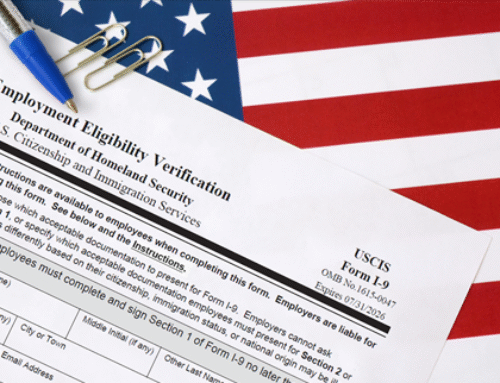Title: Unveiling the Veil: A Comprehensive Guide to Combat Payroll Fraud
In the realm of payroll management, efficiency and security are paramount. However, amidst the meticulous processes and digital advancements, there lurks a threat that can disrupt the financial stability of any organization: payroll fraud. From sophisticated cyber schemes to seemingly innocuous manipulations, the landscape of payroll fraud is diverse and ever evolving. In this guide, we delve deep into various types of payroll fraud, shedding light on their modus operandi, impact, and most importantly, strategies to combat them.
One of the most prevalent forms of payroll fraud involves impersonation. Scammers adeptly pose as authorized representatives of a business, often via email or phone, to request changes to employees’ direct deposit information. This nefarious tactic aims to reroute funds to accounts controlled by fraudsters, leading to significant financial losses for both employers and employees alike. Educating employees about verifying the authenticity of such requests and implementing stringent verification processes can act as effective deterrents against this type of fraud.
Ghost employees, though ethereal in name, cast a tangible shadow over payroll systems. This scheme involves the creation of fictitious employees within the payroll database, with fraudulent payments directed to these phantom accounts. By exploiting lax internal controls and oversight, perpetrators siphon funds undetected, causing financial hemorrhage to organizations. Regular audits, cross-referencing employee records with HR databases, and implementing biometric authentication can help unearth and prevent the ghostly presence of such fraudulent entities.
In an era dominated by digital timekeeping systems, timesheet manipulation has emerged as a favored tactic among perpetrators of payroll fraud. Whether through falsification of hours worked or unauthorized overtime claims, employees exploit vulnerabilities in time tracking systems to inflate their pay. Robust authentication mechanisms, automated alerts for unusual activity, and periodic reviews of timesheet data can act as bulwarks against this insidious form of fraud.
Beyond the confines of internal operations, payroll fraud extends its tendrils into vendor relationships. In vendor fraud schemes, unscrupulous vendors collude with insiders to inflate invoices or submit invoices for fictitious services rendered. Through careful scrutiny of vendor contracts, segregation of duties, and regular vendor performance evaluations, organizations can fortify their defenses against this external threat.
Tax evasion, while not exclusive to payroll, often intertwines with fraudulent payroll practices. From misclassification of employees as independent contractors to underreporting of income, perpetrators exploit loopholes in tax regulations to evade their fiscal obligations. Implementing robust tax compliance protocols, conducting periodic audits, and staying abreast of regulatory changes can shield organizations from the legal and financial ramifications of tax-related payroll fraud.
In the intricate tapestry of modern business operations, the payroll department stands as a bastion of financial integrity. Yet, amidst the labyrinthine processes and digital intricacies, lurks a perennial threat: payroll fraud. From sophisticated cyber schemes to subtle manipulations, the specter of payroll fraud can wreak havoc on organizational finances and tarnish reputations. In this comprehensive guide, we unveil a pantheon of strategies aimed at fortifying your payroll fortress, arming you with the knowledge and tools to prevent and remediate various forms of payroll fraud.
The first line of defense against payroll fraud begins with establishing robust authentication protocols. Implement multi-factor authentication for access to payroll systems and sensitive employee information. Require strong, unique passwords and regularly update them to mitigate the risk of unauthorized access. Additionally, educate employees about the importance of safeguarding their login credentials and report any suspicious activity promptly.
Vigilance is paramount in the battle against payroll fraud. Conduct regular audits and reviews of payroll records, employee data, and financial transactions to identify anomalies and discrepancies. Cross-reference payroll data with HR records to detect any discrepancies in employee information, such as unauthorized changes to direct deposit accounts or ghost employees. By adopting a proactive approach to monitoring and oversight, organizations can nip potential fraud in the bud and mitigate financial losses.
Segregation of duties is a fundamental principle of internal controls that helps prevent and detect fraud by dividing key tasks and responsibilities among multiple individuals. Assign distinct roles and responsibilities within the payroll department, ensuring that no single individual has unchecked control over critical functions such as payroll processing, approval of payments, and reconciliation. By creating checks and balances within the system, organizations can deter collusion and limit the opportunity for fraud.
Building a culture of awareness and compliance is essential in safeguarding against payroll fraud. Provide comprehensive training to employees at all levels about the various forms of payroll fraud and the importance of adhering to company policies and procedures. Encourage open communication channels for reporting suspicious behavior or concerns related to payroll processes. By empowering employees to be vigilant and proactive, organizations can strengthen their defenses against fraudulent activities.
In the digital age, technology can be a powerful ally in the fight against payroll fraud. Invest in robust payroll software equipped with advanced security features such as encryption, access controls, and audit trails. Leverage automation to streamline payroll processes and minimize the risk of human error or manipulation. Implement real-time monitoring and alerts to flag unusual or suspicious activity, enabling swift intervention and remediation.
Payroll fraud is not confined to internal operations but can also manifest through external channels such as vendor relationships and third-party service providers. Establish stringent vendor management protocols, conduct due diligence before engaging new vendors, and regularly evaluate vendor performance and compliance. Collaborate with external auditors and legal advisors to conduct periodic reviews and assessments of payroll processes and controls, ensuring alignment with industry best practices and regulatory requirements.
In the perpetual arms race against payroll fraud, vigilance, and preparedness are our most potent weapons. By adopting a multi-faceted approach that encompasses robust authentication protocols, regular audits, segregation of duties, awareness training, technology utilization, and collaboration with external partners, organizations can erect formidable barriers against the insidious threat of payroll fraud. Together, let us fortify our payroll fortress and safeguard the financial integrity and trust of our organizations and stakeholders alike.
Avid Payroll
Payroll@AvidPayroll.com
(970) 223-4913





